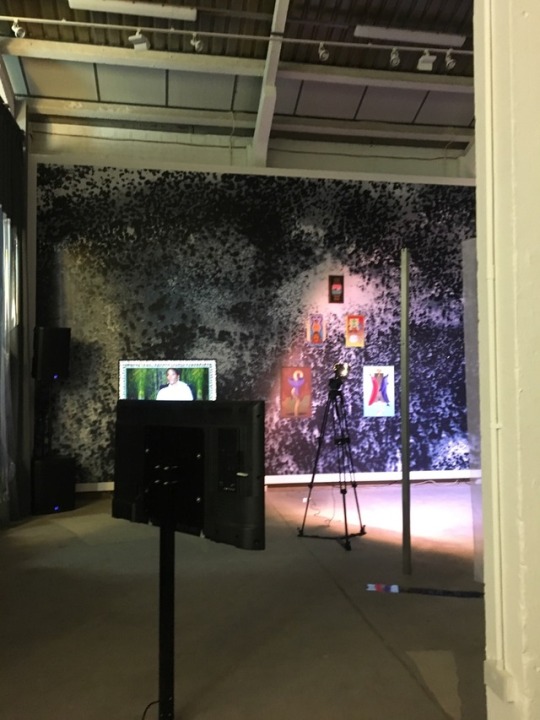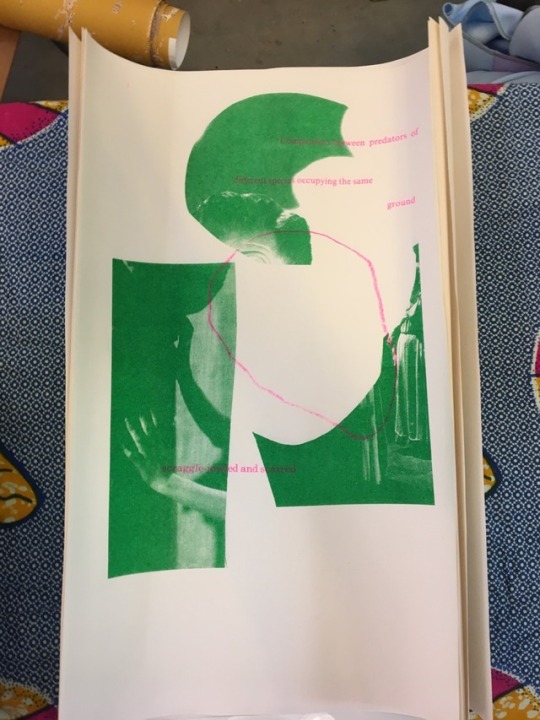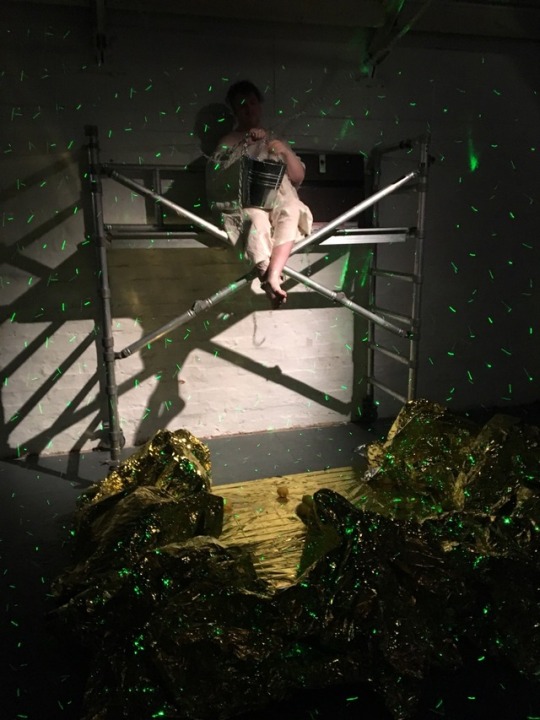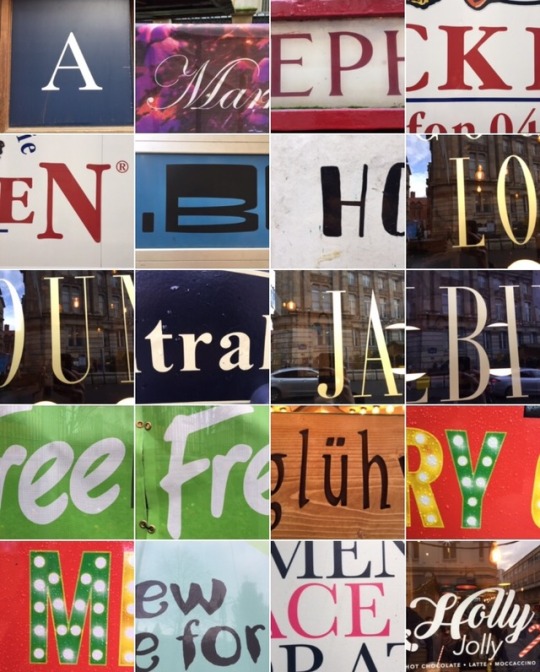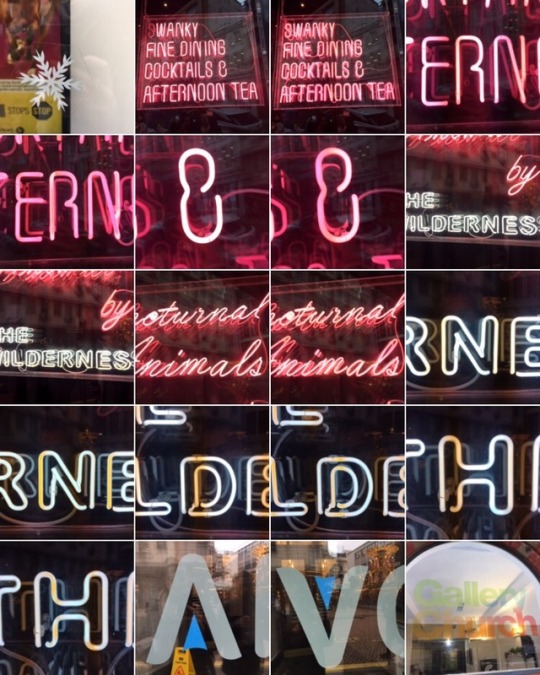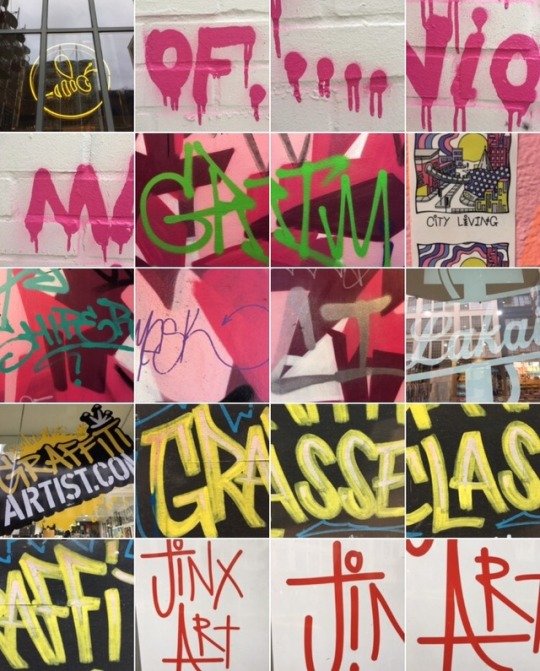Text
Adam Curtis glossary of terms
Adam Curtis is a British documentary film-maker. Curtis says that his favourite theme is "power and how it works in society", and his works explore areas of sociology, psychology, philosophy and political history.
Curtis is inspired by the pioneering sociologist Max Weber, who (in Curtis's words) challenged the "crude, left-wing, vulgar Marxism that says that everything happens because of economic forces within society".
“If you ask me what my politics are, I'm very much a creature of my time. I don't really have any. I change my mind over different issues, but I am much more fond of a libertarian view.”
Adam Curtic also talks on issues with social media. He belives advertising is a scam and that internet has been captured by corporations who don’t produce anything, contribute nothing to the wealth of the country and hoard billions of dollars to spend it on whatever appears to be a competitor. Advertisers will get you to do the work for them, by collecting the data and without any imagination suggest you ads based on what you have already bought/searched for. The tech companies are powerful in the sense that they’ve got hold of the Internet, which people think could be a really powerful thing for changing the world and spreading new ideas, and they’ve got it in this rigid headlock. To do that, they’ve conned everyone into thinking that their advertising is worth it. And in the process, they’re destroying journalism.
Bitter Lake
Film by Adam Curtis that explains why the big stories that politicians tell us have become so simplified that we can’t really see the world any longer.
The film attempts to explain several complex and interconnected narratives. One of the narratives is how past governments, including Russia and the West, with their continued interventions in Afghanistan, keep repeating such failures, without properly understanding the country's cultural background or its past political history and societal structure.
Curtis describes the film as an attempt to add an "emotional" dimension to the context of the historical narrative in order to draw its audience in – hence its over two hours in length and availability exclusively through the BBC iPlayer – in order to give the viewer something beyond the disconnected news reports they're usually fed from most traditional broadcast journalism, along with putting historical facts in a truer broader context.
Though counterintuitive to what we perceive online content to be like, work like this is vital both in itself but for breaking new ground and showing us what is possible with the relatively new platform/medium.
Article that speaks more on the liberal West and Bitter Lake: https://unherd.com/2018/11/how-duchamps-urinal-embodies-the-liberal-west/
0 notes
Text
Architecture glossary of terms
Architecture is the art or practice of designing and constructing buildings (Architects design buildings). Architectual works are often perceived as works of art. Architecture can mean: a term to describe buildings, the art of designing buildings, the style of design, knowledge of art; science; technology and humanity. The earliest surviving written work on the subject of architecture is De architectura by the roman architect Vituvius.
Modern architecture started after WW1, when modernist architects sought to develop a completely new style appropriate for a new post-war social & economic order, focused on meeting the needs of the middle & working classes.
Postmodernism
Many architects resisted modernism, finding it devoid of the decorative richness of historical styles. As the first generation of modernists began to die after WW2, a second generation of architects tried to expand the aesthetics of modernism with brutalism, buildings with expressive sculptural facades made of unfinished concrete.
ASSEMBLE
is a multi disciplinary collective working across architecture, design and art. Founded in 2010 to undertake a single self-built project, Assemble has since delivered a diverse and award-winning body of work, whilst retaining a democratic and co-operative working method that enables built, social and research-based work at a variety of scales, both making things and making things happen.

0 notes
Text
Mini lectures
Anthropocene
Anthropocene defines Earth’s most recent geologic time period as being human-influenced, or anthropogenic, based on overwhelming global evidence that atmospheric, geologic, hydrologic, biospheric and other earth system processes are now altered by humans.
Anthropocene has become an environmental buzzword ever since the atmospheric chemist and Nobel laureate Paul Crutzen popularized it in 2000.
We are altering the world with factory farming meat, mining fossil fuels, non-recyclable plastics, destroying rainforests, air travel, factories burning fossil fuels, dumping waste into oceans. Researchers have listed a set of ‘tipping points’ we are in danger of passing in a near future. Even small human induced climate changes could push these vital parts of the planet over the edge. These tipping elements are Arctic Summer Sea-Ice, Greenland Ice Sheet, West Antarctic Ice Sheet, Atlantic Thermohaline Circulation, El Nino Southern Oscillation, Indian Summer Monsoon, Sahal/West Africa Monsoon, Amazon Rainforest, Boreal Forest.
Contemporary art in Anthropocene
Production Line – Made in China and Made in Taiwan, 2014, work by Po-Chih Huang examination of cheap garment-making.
The Deluge – Noah’s Ark, 2014, work by Hung-Chih Peng about ecological crisis and extreme weather.
This Is The End, 2014, Chen Wang, series of drawings, sculptural installations and a fictional fragment imagining post-apocalyptic life-forms.
The lecure was eye opening on problems we are facing. It’s important to address these isssues and show the shocking truths. The question on what faces us in the future depends on technological progress and the 50/50 chance on it saving us or destroying us.
Black Lives Matter
The Black Lives Matter Global Network is a chapter-based, member-led organization whose mission is to build local power and to intervene in violence inflicted on Black communities by the state and vigilantes.
In 2013, three radical Black organizers—Alicia Garza, Patrisse Cullors, and Opal Tometi—created a Black-centered political will and movement building project called #BlackLivesMatter. It was in response to the Trayvon Martin’s murderer, George Zimmerman.
Especially because some of us have white privlege, it’s important not to be ignorant about movements that concern us all. It’s an ongoing issue and it’s important to know our history and not make statements based on our unresearched opinions.
One of the artists that makes work on BLM is Sondra Perry that was our group’s glossary of terms. Sondra Perry is an interdisciplinary artist who works with video, computer- based media and performance to explore the digital abstraction of identity.
Typhoon Coming On is artist’s first major European exhibition is a reckoning of dehumanized black identity, as asset and digital phantasm. The show’s title is taken from J. M.W. Turner’s painting of the British slave ship Zong, Slavers Throwing Overboard the Dead and Dying – Typhoon Coming On (1840). Sharing the title of the exhibition, a digitally modified 2018 video of Turner’s sea is projected onto the outer walls of the gallery interior. The video switches periodically to a CGI animation of purple waves, rebooting the Zong massacre for the present day.
Feminism
Feminism is a range of political movements, ideologies, and social movements that share a common goal: to define, establish, and achieve political, economic, personal, and social equality of sexes.
Feminism at its core is about equality of men and women, not “sameness.” So many people offer up the argument that women are not the “same” as men so there can’t be equality. In other words, because their bodies are different (many say “weaker” and smaller), and because men and women have different physical capabilities, these physical differences mean equality is not possible.
Throughout most of Western history, women were confined to the domestic sphere, while public life was reserved for men. In medieval Europe, women were denied the right to own property, to study, or to participate in public life.
The lecture gave me a deeper understanding on issue of equality. But the big problem with it is the hate of the term feminism that overshades it’s purpose. The mainstream media has made feminism seem like a bunch of angry women that want to control the world and put men down.
Post-Capitalism
Post-capitalism includes a number of proposals for a new economic system to replace capitalism, examine more advanced forms, or otherwise speculate on the fate of the current form of the social order. According to some classical Marxist and some social evolutionary theories, post-capitalist societies may come about as a result of spontaneous evolution as capitalism becomes obsolete. Others propose models to intentionally replace capitalism. The most notable among them are socialism and anarchism.
A book on Postcapitalism by Paul Mason argues that we are on the brink of a change so big and so profound that this time capitalism itself, the immensely complex system within which entire societies function, will mutate into something wholly new.
In the lecture we learned about Karl Marx, The Russian Revolution, Neo-Liberalizm, free zones, Hauntology, acid communism, decapitalism and took a look at different artists.
3 notes
·
View notes
Photo
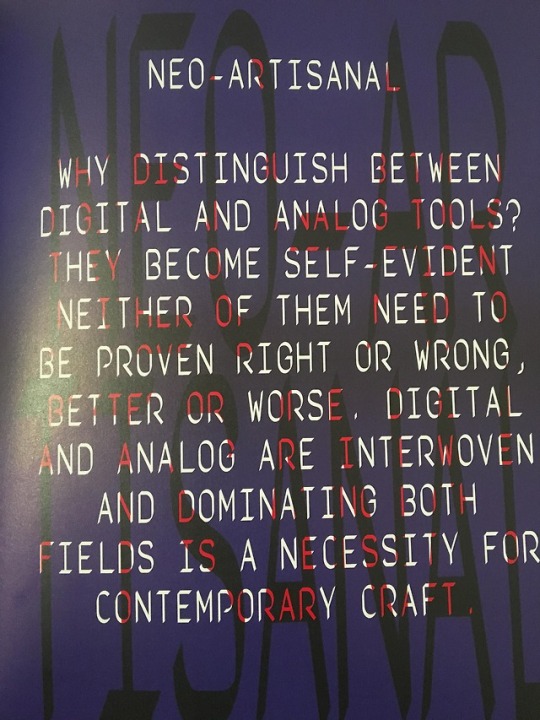
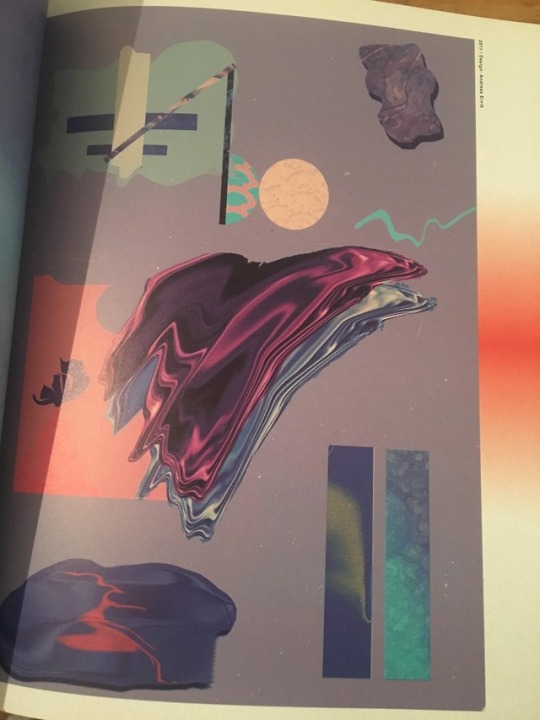
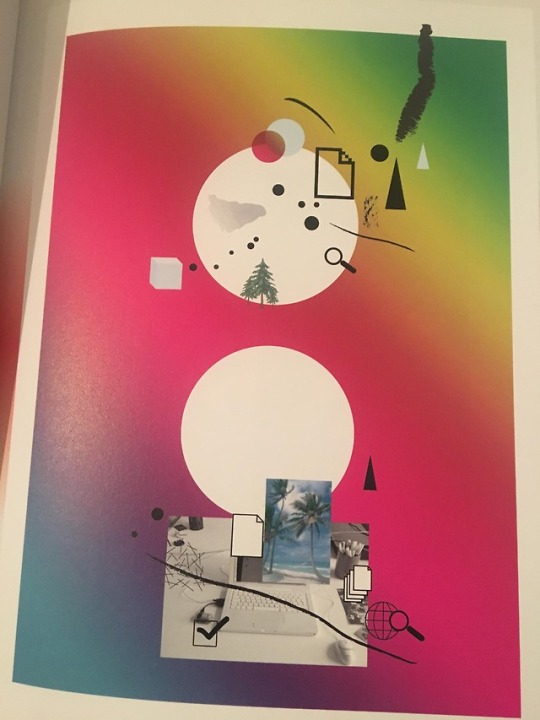
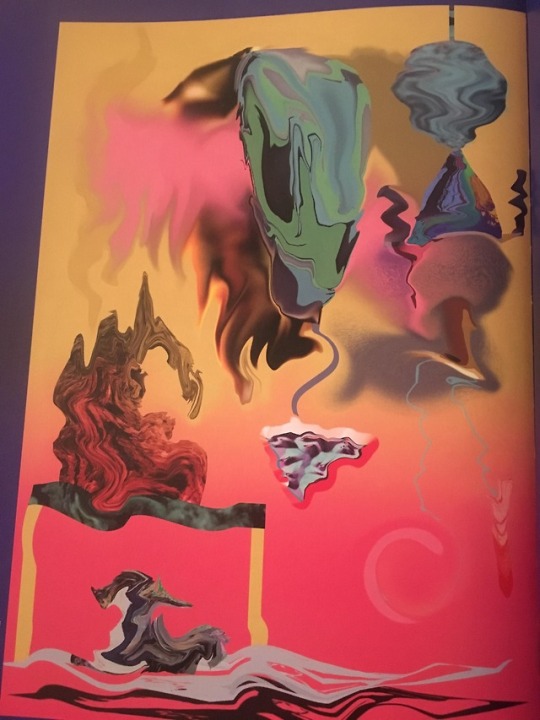
Ugly is the new pretty
As part of the Activist brief I had a friendly talk with Perfectionism. I told it we’ve had a good run, but I was onto bigger things and I couldn’t let it hold me back anymore. I seriously feel anxious when I see anything that isn’t polished to perfection (why???). It’s holding me back and it’s even weirder when you do see an artistic mess and you WORSHIP it, because it’s something you never see yourself doing. It’s fear of letting go, of failure and you end up being unrealistic about what you could accomplish in given time frame or within the limits of your skill set.
Perfectionism can’t make peace with the concept of “good enough.”
Never feeling a true sense of fulfillment makes imposible for creativity to flow. But, on the bright side, failing is still progress (of some sort).
Throughout the years the principles of “good design” have changed. Designers are starting to follow graphic design rules very loosely. Singaporean graphic designer Darius Ou used autotypography to create posters that are the “new ugly”. He says he’d rather see people hate his work than to not get any comments at all. Ou began developing his own production techniques through his daily poster-making exercise. He has come to realize that pushing boundaries comes in many ways. It doesn’t have to be ‘ugly’, it just needs to be different and be able to be remembered.
Today, the “new ugly” has become increasingly embraced by mainstream visual culture. Slovenian graphic designer Nejc Prah makes posters about laundry and carpets among others. He works with vibrant colours and crazy shapes creating work that combines 80s club typography with fourth dimension landscapes. For the TDC poster, he took one of his many photographs of the sky (this particular snap from a road trip near a small swampy lake in Slovenia) to create the carpet’s luscious, fading pattern. “A carpet is interesting because it’s an abstract rectangle filled with any kind of imagery,” says Prah. A fascination with everyday tasks that are so often ignored is where Nejc finds his ideas.
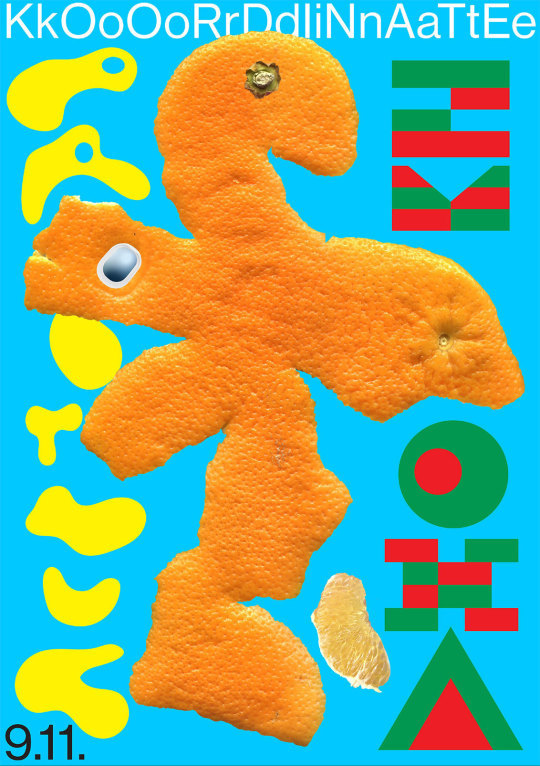



“I think personally I rarely touch any politics or activism or anything like that in my work. In that sense my work is very selfish. I’ll make a poster about doing laundry and ignore what is going on. I don’t know, maybe that is what creative freedom is.” -Nejc Prah
0 notes
Text
Glossary of Terms (Otolith Group and The Light Surgeons)
The Otolith group was founded in 2002 and consists of Anjalika Sagar and Kodwo Eshun (and others) who live and work in London. Their work is research based and spans the moving image, audio, performance, installation, and curation.
“Facelessnes that we really like.” That is how the members of Otolith group explain the reason behind their name.
Otolith group is building a new film culture based on a collective practice. They are not just making films, but also curating exhibitions, putting on discussions that brings people together instead of seperating the audience from film makers. The term integrated practice comes from the 80s and it means combining/coordinating seperate elements as to provide a harmonious, interrelated whole. With it they are building a new education system.
They won a turner prize for The Image in Question III . The Image in Question is a series of screening-events that explore the histories and potentials of the essayistic. Four characters – the boy, an engineer, an industrialist and a journalist – are extracted and given a narrative voice in the contemporary world.
“The world doesn’t need any more films, the world doesn’t need any more video art – so you have to think it through.”
From researching sound I also came across an interesting group that I feel like has similar principles as the Otolith Group. The Light Surgeons make a variety of stuff. From documentary led audio/visual production to installation performances. They work with comercial artists to produce a visual element to a performance or they develop their own visual work. TLS try to develop live cinema approach to performance.
They made a live cinema work, a collaborative piece called Super Everything commissioned by the British Council. It was filmed in Malaysia and it touches issues with the environment - confusion of mass consumption, effect of the internet (and how does that affect our ‘freedom’).
When they were writing a proposal for the piece they worked on keywords for the video and what the outcome would be. They constructed a narrative of how different themes and subjects could sit together.
The project involved extensive collaboration with a diverse group of Malaysian musicians and visual artists. An hour long performance is a multi layered audio/video piece with them reinterpreting footage/audio that they have gathered live on stage. As a framework they are bringing together people, ritual and play. It looks beautifully rich of Malaysian culture through the lens of identity. It touches the topic of who we are as human beings.
We have to go beyond race, religion, creed.
The piece makes a point that there are deep fundamental questions that need to be answered, questions about justice, democracy and even freedom.
The sentence that stuck with me from a clip of the live performance is: “If we don’t know who we are, if we dont know where we have come from, how do we know where we are going?”
0 notes
Text
The idea of seeing music
(Artist & Designer mini brief Digging Deeper)
For my designer brief I am making work related to music (Purity is a name synonymous with music). With mind mapping I made word association with pulse, beat, sound wave and audio waveform. That is where my research on sound began. I have a tiny bit of knowledge on audio forms from my secondary school (using Adobe Audition), but I pretty much can’t remember any of it (except how to remove white noise from a video).
What is sound
Sound is not a thing in itself but a property of the medium through which it is travelling. It is produced when something vibrates - cause of medium around it to vibrate.
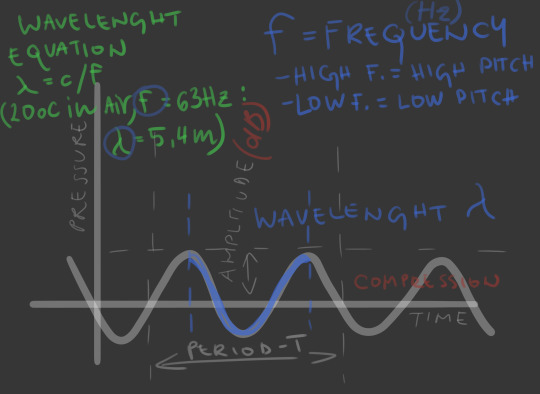
Jerobeam Fenderson - Oscilloscope Music
When I was looking at different waveforms I came across oscilloscope music. An oscilloscope uses a two-axis graph to give a visual representation of a waveform over time, with the horizontal axis representing time and the vertical axis representing the amplitude. In music production, oscilloscopes are commonly used to assist dynamics processing and sound synthesis.
Jerobeam Fenderson creates audiovisual music where the images are created by soundwaves on an analog oscilloscope. With a background in electronics and audio engineering, Jerobeam began experimenting with technical approaches to composition around 2012, and has since developed his own form of expression with Oscilloscope Music. The first track of its kind was “Nuclear Black Noise”, a composition consisting entirely of sine waves, and it was followed by ever-evolving audio-visual live shows, and an album in 2016.
The idea of “seeing music” is hard to grasp, but Jerobeam makes what sounds impossible, very real. He forms 2D and 3D objects with minimalistic green lines from abstract lissajous shapes that mutate into complex vector graphics, using the left and right audio channels as X and Y coordinates.
Oscilloscope Music turns the transformation of abstract concepts into something tangible that works on an emotional level outside of its technical context. Using this approach, math doesn’t seem like the dry concept it is often seen as, but rather a key to the fundamental principles of nature.
Here is a link to a song from his album Oscilloscope Music: https://bit.ly/2FsVveA
Reasearching further I found a software (Oscilloscope) made for looking at music (by playing any mp3 file) based on osilloscope’s coordinates X and Y. In the software you have options to change volume, time stretch, scale, stroke weight, hue, intensity and after glow. Here are a few screenshots of when I used it:






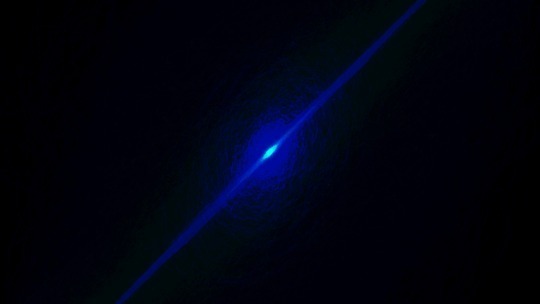


I also found out there is a program called OsciStudio that converts 3d shapes and animations to sounds (through obj files or blender addons). And my plan was to try and make my own Osci Music with a simple 3d shape I would make in Blender, but I figured out you can’t export video files in the software yet, so I’ll just wait for an upgrade.
In retrospect I find his work extremely visually pleasing. It is what I believe how people with synesthesia must feel like. The combination of sound and the simple green lines take you on a serious trip to wherever Oscillioscope music comes from. I don’t care if not everyone agrees with me, but what Jerobeam is creating is truly a piece of magic. The animation feels like it’s taking you through a portal to another dimension, compelling to look at and impossible to look away.
It seems a bit weird how music has progressed. I’m sure some people would say “everything is music to kids these days”. But if you look at it from a different perspective, music has evolved into something so much more than just lyrics, melody or beats. It’s the new era of music and I’m loving it. Experimentation with sound is the only way to create something we haven’t heard before.
And then there’s Jerobeam who goes a leap further from other electronic music artists and makes us see what we hear. How crazy of a concept would that have been ages ago? I’m waiting for him to make me smell music next.
KEY THEMES
Music, animation, visuals, soundwaves
WORD ASSOCIATION
Music: singing, dancing, melody, instrumental, electronic, compose, jazz, pop, rock, disco, metal, dj, orchestra, duo, rap, festival, ska, lyrics, mtv, youtube, rhythm, choir, vocalist, tune, recording, radio, singer, album, band, performer, concert, mainstream, guitarist, pianist
Animation: animator, video, anime, cartoon, 3d, 2d, stop motion, motion, dragonframe, photography, flip book, storytelling, story book, screenplay, frame, film, modelling, graphical, realistic, digital
Visuals: audio, video, film, animation, graphic, performance, dance, sing, choreography, artwork, lighting, photography, multimedia, camera, screen
Soundwaves: air pressure, time, compression, period, amplitude, frequency, pitch, wavelenght, graphic, audacity, axis, noise, words, vibration, medium, rise time, time interval, distortion
RELATED ARTICLES/ARTWORKS
- Project Entercourse Of The New Age
Named after one of David Chastel’s and Yann’s favourite tracks by Glenn Crocker released in 1996, Entercourse Of The New Age (EOTNA) pays tribute to the genre of electronic music. In 2016 they had the opportuninty to have an exhibition space in the centre of Paris. They invited contemporary artists to design the iconography of old records that have moved the history of electronic music but didn’t benefit from any artwork since their release. EOTNA held its first exhibition in January 2017 and, to date, has worked with a total of 26 artists to reimagine beloved tracks with contemporary visuals. The idea of the project was not to position themselves within a specific artistic scene, but to show, on the contrary, very different techniques and styles.
- Daniel Avery: Visible Gravity
A 48 minute ambient track available for free download at XLR8R. “An ode to those early and quiet moments in a night where the strobe light is still only a hopeful glimmer beyond the horizon, a sign of the euphoria to follow.”
AN electronic track combined with an animation to go alongside Visible Gravity, directed by Matt&Dan. They imported the mix into Ableton and used an Oscilloscope to view the waveforms. They then added various plug-ins which let them manipulate the frequencies which gave them a live visual representation in a totally new way to how they have created previous artworks.
- Dave Gaskarth: Quadripoints
Both from Birmingham but now based in London, Dave Gaskarth and Lee Gamble are long-term collaborators, with Dave working on most of Lee’s live visuals and videos since 2012.
Much of this work takes the shape of computer-generated 3D environments that use satellite imaging and other mapping date to create colour and texture. For 2017 track Quadripoints, for example, Dave developed a mountainous realm inhabited by spheres covered with satellite imagery pulled from different nation states. The aggressive balls jostle for top position, almost becoming an anthropomorphic being. For ongoing project Foldings, the duo has taken the idea and created site-specific segments influenced by the location of each gig. Whereas Lee sources field recordings of the specific city or records audio on arrival to weave around his tracks, Dave scrapes data, satellite photography and other mapping materials to form audio-reactive visuals which play over three screens.
- Michael Satter
Since 2009 the designer has created artworks for labels Live At Robert Johnson, Hivern Discs, Die Orakel and Rivotan Records. He makes simplistic designs that incorporate print, photography and illustration. On the surface their design appears simple, but the exemplary layouts are far from simple to create.
He has a long-time passion for electronic music, his cover artworks reflect the identity of the artist, and reference to the tracks on the record.
HOW THE ARTWORK RELATES TO HISTORY
Oscilloscope, previously called an oscillograph is an electronic instrument made for maintenance of electronic equipment and laboratory work. General Radio was the first to manufacture an oscilloscope that was usable outside a laboratory setting. After WW2 Heathkit Corporation released first oscilloscope kit made from electronic parts.
The first electronic devices for performing music were developed at the end of the 19th century, and shortly afterward Italian futurists explored sounds that had not been considered musical. By the 1940s, magnetic audio tape allowed musicians to tape sounds and then modify them by changing the tape speed or direction, leading to the development of electroacoustic tape music in the 1940s, in Egypt and France. In the 1970s, electronic music began having a significant influence on popular music, with the adoption of polyphonic synthesizers, electronic drums, drum machines, and turntables, through the genres such as disco, krautrock, new wave, synth-pop, hip hop and EDM.
Experimental music became prominent in the mid-20th century, particularly in Europe and North America. It is an improvised music without any rules, usually musicians make an effort to avoid cliches (recognizable genres).
BOOKS THAT RELATE TO MY KEYWORDS
- Experimental Music Since 1970 by Jennie Gottschalk
- Listening Through the Noise by DeMers Joanna
- Silence: Lectures and Writings by John Cage
- Boring Formless Nonsense by Eldritch Priest
- Technical Drawing with Engineering Graphics
SUMMARY
As I continue to work on my designer brief I will think about ways to manipulate waveforms and find my inspiration in artists that I have researched.
Looking at artists that have taken the term ‘art’ and made it be literally anything is something that I look forward to exploring more. What’s so interesting about experimental art is how artists use different techniques and ideas that no one has seen before. What comes to mind is the movie The Matrix that did just that; exposed mainstream audience.
To me it’s really easy to make design that is common, but a huge struggle to do the opposite (probably because that’s all I’ve been doing so far). How to not stay in the norm and just do what I know how to do is something I need to work on.
0 notes
Photo

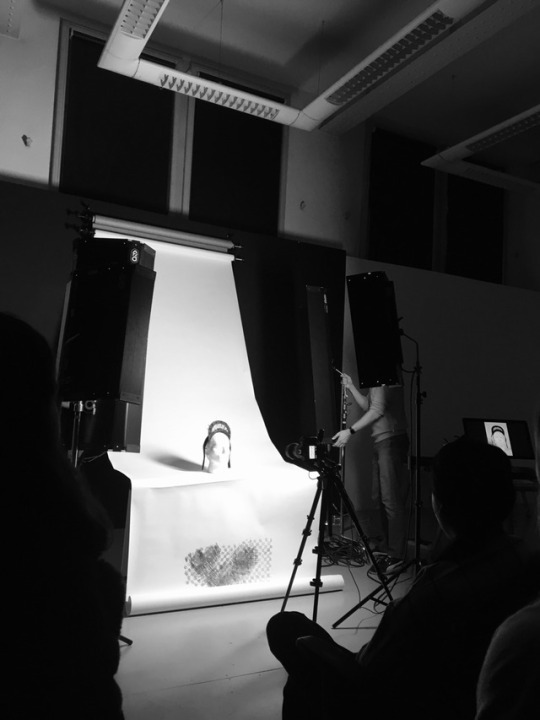
Today my group had studio induction. We learned everything about studio photography; from setting up different lights, using backdrops, reflective boards, grid modifiers to safty hazards in the studio.
When it comes to using light equipment we learned how to use them when we want certain effects on the photograph. Usually natural light comes from above and drops a shadow bellow. So first we set up the main light and played with the angles of light and set up the correct exposure on our dslr camera. Moving the light further away creates a tonal gradient (longer transition of the gradients, a smoother one). We used white insulation boards for reflectivness. The board was white on one side and black on the other. The white side creates a soft light.
Then we added a second light, callled fill light. You can increse/decrease brightness on both lights. If they are both set to their full brightness you get two shadows. Changing the position should make it look more natural.
We added some more lights as we went on, learning about how to use barn doors and cords for each one (cords: trip hazards!!). Afterwards we added grid modifiers to the fringe of lights. When using a black one we get more focused beam of light (loses the intensity of the light). Changing the exposure compensates the light. We can use it in the combination with fill lights. The more gridded one gave us bigger intensity of the light.
With the second set of lights we used a black backdrop, set up white balance with photo reference (neutral tones). We played with changing color temperature on monolights, refined how much visibility we wanted in a certain place and masked unwanted spillage of light with barn doors.
0 notes
Photo

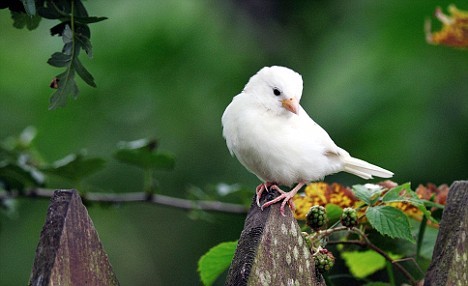
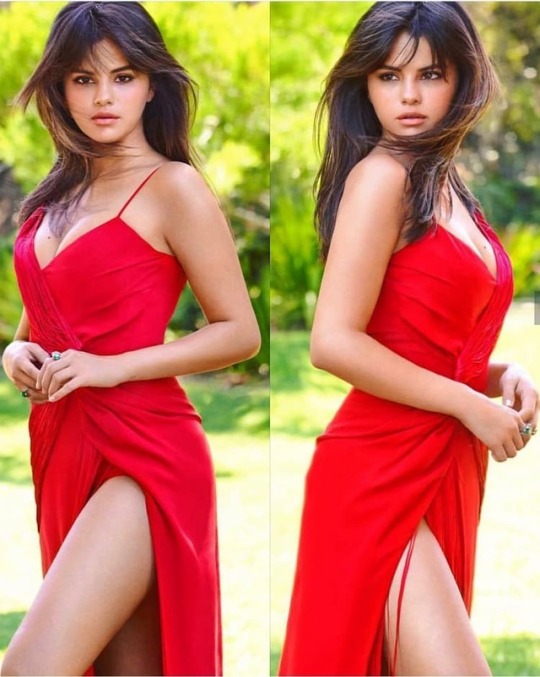
Snow White and Rose Red in the 24th Century
For the producer as a storyteller brief I chose to remix the Snow White and Rose Red fairy tale. My original idea was to create a movie poster, but it ended up looking like a book cover, so that would be the first thing I would change about it. It also doesn’t look futuristic enough (considering that’s what the story is about). But enough with what I should have done different ((everything!)), here’s my story of how I transformed the little girls of a German fairy tale, to full grown women, one being a robot, and one an emotionless sister!
A poor widow once lived in a little cottage. In front of the cottage was a garden, in which were growing two rose trees; one of these bore white roses, and the other red. She had twin girls, who resembled the rose trees. One was called Snow-White, and the other Rose-Red; and they were as religious and loving, busy and untiring, as any two children ever were.
Sadly, not every childhood is a happy one. One day the pretty as a picture Snow-White heard a bird sing from her bedroom window. It was a sound she had never heard before. It startled her, and for the first time in days her gaze moved from the book she was devoured in, to her tiny window facing their family’s backyard. She let the book face covers, got up from her bed and slowly stepped her bare feet on the cold wooden floors. It was the first day of spring and the sun glistened through the polluted smog. She was not supposed to go outside; her mother was very clear about that. The thought of doing so had not crossed her mind - until then. She couldn’t see where the sound was coming from. She let her tiny pale face as close to the window as she could, but there was no way of making out clear shapes from the fog that surrounded only two trees in the garden. Snow-White had reached a decision at that point. How much harm could do if she only took a fast glance through the garden? Who knows what she may find? Maybe there was a rabbit strolling; she remembers the one her mother brought home when she was just gaining her self-awareness. It must have been ages ago. Her mother never stops talking about it. Is that how a rabbit sounds?
Her child mind did not stop to think about the consequences of what she was about to do. Her twin sister Rose-Red was at school that day; only one of them having privilege of education. With overpopulation came inability to have so many people walking through the streets everyday. There was no place; no place for people anymore. Snow-White was unaware of such things. Her tiny room and her handful of books were her whole world.
For the first time ever Snow-White opened the cottage’s front door alone. She could smell the polluted air instantly. Yet there it was; even clearer than before. The interwined sounds of her mother singing and her sister whistling, but so much greater. She was hearing music she had read about in books. The one you can swirl around to. Just as she stepped, still bearfoot, onto the dirty mud, she saw what she thought made the most beautiful sound she had ever heard. The albino bird flew by her head, like it was teasing her, letting her know she is not the prettiest thing in the whole world - like her mother lovingly told her each and every day. Mesmerised, the little Snow-White forgot about everything for a moment, her whole word was suddenly this two-winged creature. She knew it was a bird, she had read enough books in her short existence to know so. It flew on her shoulder for a short amount of time and just as the bird opened up its wings again, Snow-White realised the bird was talking to her. In a non verbal way, the bird was letting her know to follow it.
That was Snow-Whites tragic end. She climbed the tree with the white roses, thoughtlessly following the snow-white bird, her right foot was too heavy for one of the slender branches. The bird watched her fall to the ground, her once white hair then stained red.
20 years later
It’s the year 2400. Rose-Red is celebrating leap year with her colleagues. The robot building company was saying goodbye to it’s best business year yet. With pollution being at it’s lowest in the last two centuries, there was a lot to celebrate for. Sure; there are only two seasons, winter and summer, but the world now controlled when one was ending and the other one beginning. There was always enough time to prepare. Now it was time for winter. Everyone is prepared to stay inside for a few months now, Rose-Red made sure she would have company for that period of time. She was allowed to have only one personal helper (as they called robots - helpers) and she made sure hers was perfect. It was creepy how much the thing looked like her, talked like her even. But she liked it that way. Having her sister back was astonishing, she felt proud of her success throughout the years, she was sure her mother would have been too. Rose-Red didn’t feel emotional when she saw Snow-White for the first time, through. She knew it had no feelings, but sometimes she could swear the thing was weirdly like the 21st century human race. It was programed that way. To show love and all the other nonsense emotions people thought they didn’t have control of three centuries ago. It had been her next study - observing the behavioral patterns of her helper.
Snow-White had spent her days singing to herself and to her sister, cleaning room after room, never letting the dust settle. She enjoyed reading and smiling. Her first two months of existence were spent that way, until one day Rose-Red’s study shifted.
The robot could talk, and not just to her sister, but to this one innocent bird that made it’s way inside the house. It had white feathers and Rose-Red was sure of never seeing a creature like it. It almost made her feel something.
When we were presenting the artwork we couldn’t talk about it for 10 minutes, while others discussed it and made their own assumptions about its symbolism and story. For my poster it wasn’t hard for everyone to know what story I remade. It was interesting to hear everyone’s take on it and I liked every storyline they thought it was. There was a discussion about robots and dolls (no one had been sure what Snow White was). We also talked about the Hollywood’s take on perfectionism and how that could relate to my artwork.
After I explaned the actual story and how I had been inspired by Westworld. We talked about how it would have been better to make a different background that relates to global warming (context matters!). The poster also suddenly made sense in a way of: what is that bird doing there ?!
So why did I do what I did when I did it?
I chose Selena Gomez as the subject because it was easier for the stroyline I had. To make the illusion of twins you need similar photos in different positions. I wanted to make the clear resemblance and clear difference of two people. (Hence choosing a famous pearson with lots of photos online.) I loved challenging myself in thinking about not only how the storyline will evolve, but also making it full of hidden meanings. The bird to me represents something pure, just as pure as Snow White was, just as pure as our planet should be. The red feels like everything bad in this world, every dirty wound we create on Earth. But maybe when our planet goes red in the future, we could make it white again (just as Snow White’s tragic end wasn’t an actual end?). I’m also 99% sure there is a 99% chance of robots advancing in the future. I don’t know if that answers the question, but that’s why.
0 notes
Text
Workshop Inductions
Wood workshop
We started with health and safety introduction in the workshop which includes wearing googles, ear defenders and steel toe capped boots. Afterwards we tried using all the machines available to us, including hand tools. We were showed how to use each of the machines safely. When we were done with that, it was time for us to produce a joint. Each one of us got a piece of wood that we cut in three same-size sections. We did so using a bandsaw, and then the disc sander to remove any rough edges. We then measured, marked up and cut away pieces so that they would slot together at right angles. In the end we screwed the pieces together.

Metal workshop
The same as with wood, we had a lot of health-safety checks. For this worshop we had a task beforehand to do, which was to sketch out a shape. When we were done with being introduced to all the machines available to us, we received metal rods from which we were to create a frame of our shape. The shape I had drawn out was a shape of a house, but I decided to change it to a ‘cube within a cube’. I cut the metal rods to the length each side had to be.
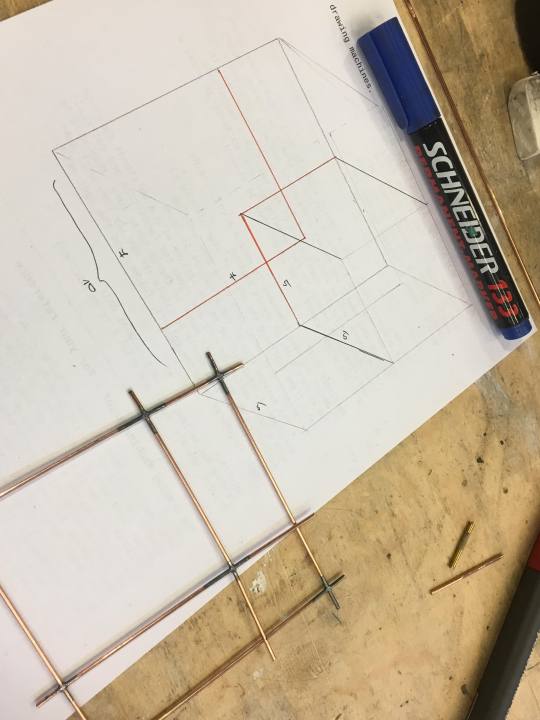
My final thing to do was weld the rods together. I found the workshop enjoyable and fun.
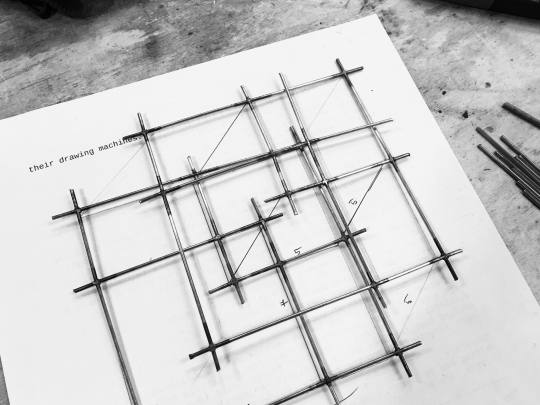

Laser and Textiles Induction
First we were shown how the laser cutters work, but we won’t be using them ourselves. If we would want something laser-done we would bring in our 3D desings and it would be done for us. In the laser room we also have Mac computers with appropriate 3D programs.
Next we went to the textiles workshop, which seems like a fun and friendly place to work in. It contains sewing machines, heat-press, fabric printers, paints and different hand tools. We were presented with different ways of working with textiles and I believe you can produce pretty much anything that comes to mind.


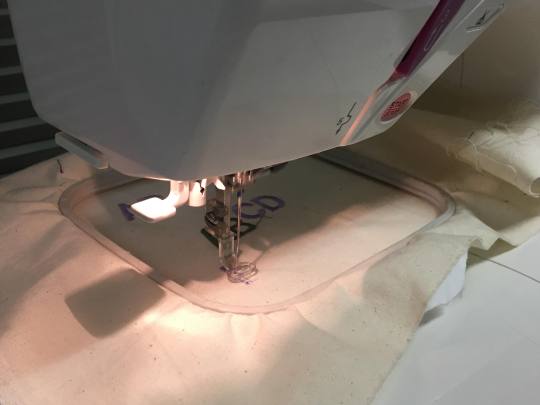
Lens-based media
To be honest this induction didn’t teach me anything new, but I still found it exciting, since we worked with two of my favorite programs: Adobe Photoshop and Premiere. In Photoshop we created a moving image (gif) and I just later realized we were making a knock off of the first game ever created (called Pong).

For Premiere we went to the editing studio, which has powerful processors perfect for working in programs such as Premiere and After Effects, amongst others. (Also very comfortable chairs, just saying.) At first we went through different important things to know with regards to saving files and what kind of computers are best to work with big files. Premiere is a hard program to work and it was good to freshen up my mind with some small details when it comes to certain things. After that it was time to set up our own files and we went through all the different tools Premiere has to offer. We imported different images and videos to manipulate. To me the most exciting part was creating a mask, since I did not know you could do that in Premiere. In the end we had the time to experiment with tools to create our own artistic mess.
For our group’s drawing machine I worked on a documentary based video in Adobe Premiere.
youtube
Print workshop
An exciting workshop with getting to know things such as lithography, monotype (with different transfer techniques), silk screening, relief printing, engraving... We created our own pieces, portraits and an abstract print-painting.



0 notes
Photo

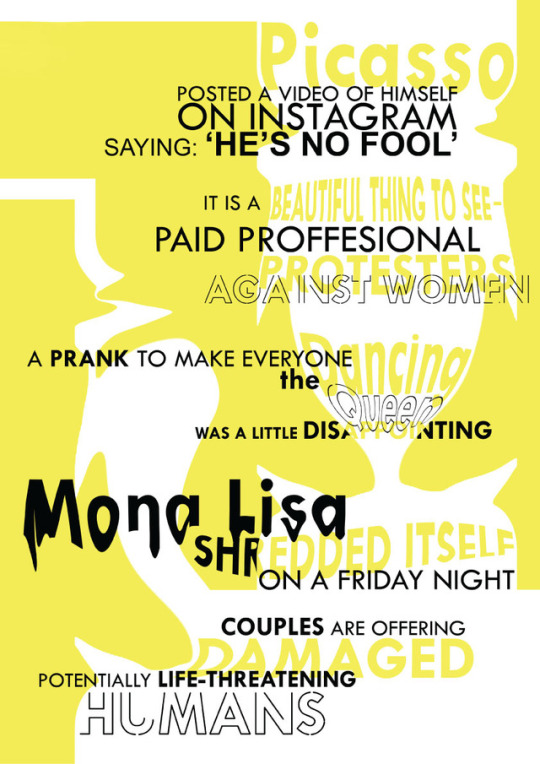


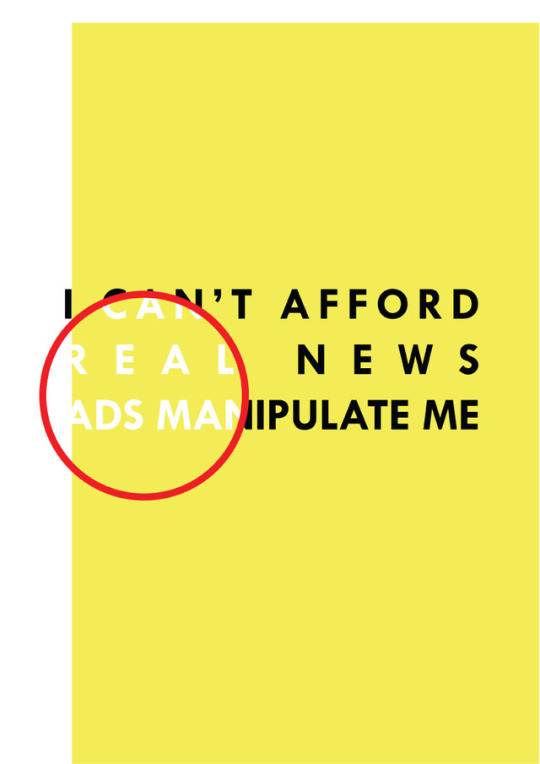
Are we mindful (or are we mindless consumers of data)?
That is the question that stuck with me throughout the Producer as Activist project. When I first started to think about which topic I wanted to work with, plenty came to mind. I decided to go with education and see where it takes me. A turning point for me was when I was looking through news websites, and came across an article about a free education software by Facebook. It made me think about the digital realm. Something I always felt strongly about, is how digital world is negatively affecting our minds, especially those of my generation and posterior. So, are we mindful, or are we only interested in what can make us entertained? How do we engage with information? Are we being brainwashed, everyday, by social media? Are we losing our touch with reality? Do we believe everything we read online? Is the future clickbait? Because if it is, we are slowly becoming a society unable to focus on anything.
It was difficult for me to make work negatively associated with social media, since I do believe it has more pros than cons. But the cons are the ones very oblivious to many people, and I don't think they concern themselves with what kind of an effect media has on us. Our brains have consequently learned how to read differently (with constant distractions), which has reshaped how we learn. While the Internet gives us access to more information than before, paradoxically, we are becoming dimmer and more superficial as people.
In the book, The Shallows: What the Internet is Doing to Our Brains, Nicholas Carr makes the case that technology is making an intellectual decay in our brains. It’s a provocative claim but one that he backs up with findings from neuroscience. The researchers found that those who had more experience with Google had heightened activity in more parts of the brain, particularly the prefrontal cortex. This is the part of your brain that is the seat of consciousness, which you use to make decisions. When you encounter hyperlinked text, your brain asks the question: “To click or not to click.” Because you are constantly being interrupted to make these decisions, you rarely “get lost” in the text and it hardly ever becomes something of true knowledge. Or as Carr puts it, “The redirection of our mental resources, from reading words to making judgments, may be imperceptible – our brains are quick – but it’s been shown to impede comprehension and retention, particularly when repeated frequently.” Not surprisingly, Internet usage rewires our brain; even a little usage changes the neural pathways of your brain. When you read a book, you comprehend more. According to a study in the Journal of Digital Information, those who read documents with hypertext didn’t retain as much information as those who read text without links. By reading incessantly on the Internet, we scatter our minds, lessen our focus, and diminish our aptitude.
My thought process went from thinking about news to clickbait, sensationalism and headlines. I wanted to put emphasis on how comical headlines can be and how when we read them we don't think, we believe. I made my own random generator by hilighting random words in a paragraph of a newspaper.
The only solution I think there is, is limiting media exposure and consciously choosing what to watch. But first we have to bring attention to it by using ads against what they were initially created for. I chose to make posters simply for that reason, and also because I've never done them before and I thought it would be challenging. For a while now I have been captivated by poster art and as much as I wanted that to inspire me in my designing, I knew for the amount of information I had I was going to do something completely my own. It ended up not not capuring what I wanted it to and I would change pretty much everything about it, but I still think the posters speak a story of their own and I'm sure it could affect someone out there in an enlightening sort of way. If I were to expand my idea, I would create kinetic design (moving text and optical illusions).

0 notes
Text
Reality is somehow what we expect it to be
On Wednesday we visited the Icon Gallery to see the exhibition of work by Haroon Mirza. The gallery is filled with installations that test the interplay and friction between sound, light waves and electric current. Throughout the gallery we looked at different electrical equipment like radios, TVs and gramophones, composite with looping film footage and electronic sound. It’s a compelling combination of the two, creating a physical impact on the viewer.
Big part of the exhibition was the audio that sounded robotic, not ever clear or something you could decipher. For The National Apavilion of then and now (2011) Haroon used electronic circuit and amplifier to create an electronic buzzing sound. It is accompanied with grey sound-insulating pyramidal foam, that does not reflect light or sound. The center of installation is a circle of white LED lights, that create a heavenly feel. For two of his works that are exhibited, he used white noise as the audio; After the Big Bang (2014) and Siren (2012) both deal with the significance of sound as a signal.

From using a radio that is set to a static frequency, contacting mic to the monitor, involving a piano keyboard, turning up an unconnected amplifier; Haroon Mirza without a doubt explored how audio can be manipulated.
Apavillion is the start of LED Composition series. Throughout the exhibition there is a clear repetition of using LED lights in combination with audio and video, amongst other. In the middle gallery, Chamber for Horwitz: Sonakinatography Transcriptions in Surround Sound (2015), is made of eight LED units (that are arranged on walls), speakers and pyramidal foam panels, creating an electronic sound-visual effect. It’s placed in a walk-free room, making it easy to have an experience of your own.
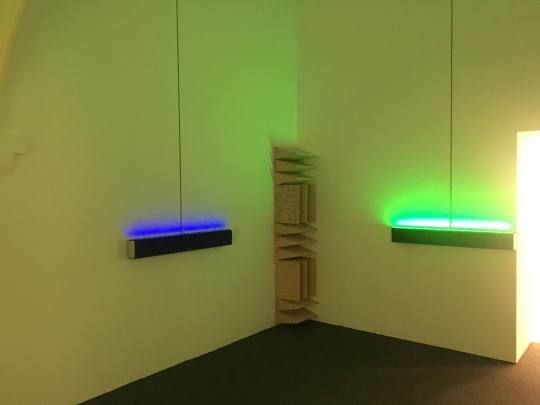
An odd combination with the whole exhibition, I think, are Cap Circle (2016) and Constellations (2016), it feels out of place, but it does connect to the rest of the installations, since it is based on traces of fungi, that distorts our perception of reality, including vision and hearing. That certainly connects to the anechoic chamber we were in (The National Apavilion of then and now).


To me it felt like the whole exhibition was inspired by psilocybin and the experience it could potentially give you. I think Haroon Mirza’s work takes you on an out-of-this-world trip in which you wish you could stay for a longer period of time. The final gallery seems to me like a realization, revelation, something the artist feels strongly about. Welcome to the Machine (2018) references to the fast fashion industry in Bangladesh. The combination of fake designer accessories and solar panels, made a strong statement.

0 notes
Photo

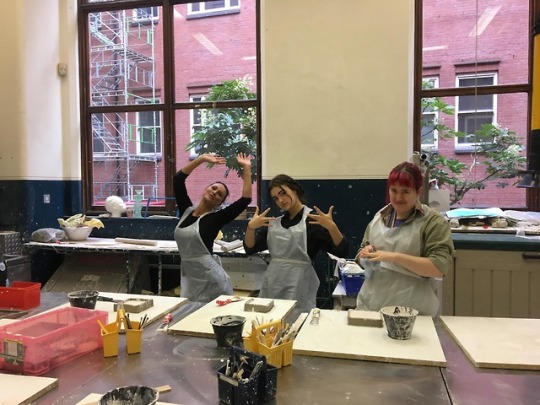

Today we had plaster induction, which I quite enjoyed (it felt like time travel back to being a child). We started off with cutting ourselves pieces of clay and making a postcard shape out of it. Next step was using clay tools to create any sort of a drawing. I wanted to see what kind of shapes I would get later on as we would add plaster, so I just played with making textures. For some reason it was really relaxing and I could do it all day. After we finished our designs, it was time to make firm clay walls around our ‘postcards’, so that plaster could sit in it. As we were done with that, it was time to make our own plaster. When mixing water and plaster powder we had to be careful with our measurements, so that we had the right consistency. The last steps were pouring the plaster, waiting for it to dry, removing the clay and cleaning the space. Biggest leson learned: plaster gets everywhere, somehow.
0 notes
Photo



BMAG Feminism Exhibition
Feminist artist are exhibiting their work at Birmingham Museum & Art Gallery. They are showcasing bold contemporary artworks that represent relation to race, geography and sexuality amongst other. Women have been fighting for their right to voice their opinions in a public realm that silenced women, for a long time now. The female body has been sexualised as an object to be viewed for plesure through male gaze.
In the 20th century, as more women began to enter art schools, the depiction of women’s bodies became different.
The exhibition does not shy away from difficult issues. It acknowledges the monumental step taken for women’s rights 100 years ago, but through challenging contemporary artworks it explores some of the experiences common to being a woman in 21st century society, and the progress still to be made.
0 notes
Text
We are making a Reverse Printing Drawing Machine
Monday, 29th of October
The start of our drawing machine was simply: chaotic. Not necessarily with a negative connotation, but it was messy and all over the place. Literally.

Our idea generating consisted of three things: mind mapping, word association and all the weird stuff Anita brought to school. I’m sure our lecturers would not be so happy to hear about the last one, but hear me out: it worked. Kind of.
The fact that we started building something almost at the beginning helped us a lot in the future process of our creating. But, it’s true that we should have used more idea generating strategies before we started getting ‘hands on’. To create something truly interesting and exciting, you really need to dig deeper (I think thats the expression I should be using?).
However, as we started to expand our word association and think of the pros and cons of our plans, we constantly hit a brick wall. Why do we want to create this? How are we going to create this? Also, between five of us, we all had our unique ideas and we were torn between making a useless and a useful machine.
It is pointless to mention the ideas we have had, because they have almost nothing in common with what we are actually creating now. But we wanted to work with a person being the machine and creating abstract marks. We thought about many ways a person could be restricted, so that was where we were lead on to our actual creation.
Restriction.
Tuesday, 30th of October
Me, Anita, Maddie, Jemimah and Xiao all sat down in the common room to discus our project further. We also briefly discussed our documentation and I decided to record everything we were doing from that point on.
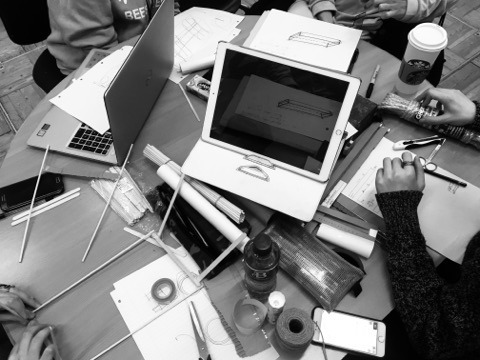
The day before we did not have a clear vision on what we were doing, but as Xiao came to school with a prototype of a machine he wanted to create, we all came to a conclusion that that was our starting point.
The machine was in that moment a pen that was moving horizontally and vertically to create marks on paper. As we developed the idea, we continued to think about how could we make it more restricting.
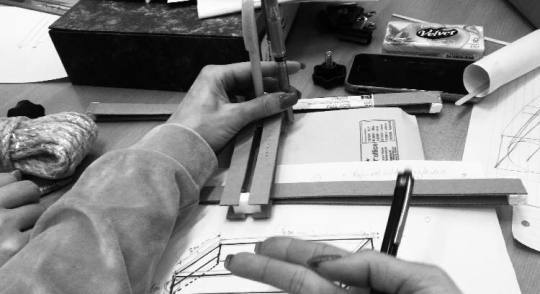
And so we decided to have paper on two cardboard cylinders and that would create the movement we wanted. How so? Instead of manually moving the pen, the user would be moving the paper. That is how we created the static pen and the restriction of only being able to move the paper.
Connecting the dots, we were creating a reverse printing-drawing machine.
We spent the rest of the day figuring out how to make the machine work, we made some sketches, and at the end me, Jemimah and Maddie went to the metal workshop to create the frame out of metal rods.

When we were done with that, we met up with Anita and Xiao who were fast to tell us the rods were too bendable and not stable enough. And so we determined the frame is going to be the prototype for now.
Thursday, 1st of November
On Thursday our practice continued. We now had sugar paper, cylinders and different pens to test out. We continued on building the prototype and thinking about how we could improve the overall machine.
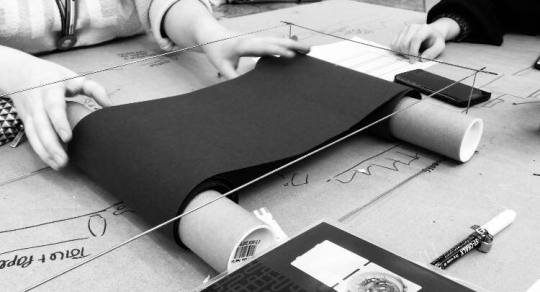
Me and Maddie went back to the metal workshop to find Alex and ask him what kind of options we had with metal rodding. We needed thicker rods to have a stable machine. He showed us the perfect ones, but the problem was that we-as first years, cannot work with them and so as long as we made all the designs, he would weld the frame for us and we would attach the rest of the parts.
We continued to work until we were sure we had everything set and Anita created the final design.


Friday, 2nd of November
Me, Anita and Maddie went to the metal workshop we had scheduled for that day to meet up with Alex. He was busy with Fine Art students, but was working on our frame that he told us would be done next week. So all we can do for now is wait and use the workshops on Tuesday to finish our machine.
Monday will consist of us talking about documentation and making some voiceovers for it. We hope the camera induction will come in handy as well.
As the first week comes to an end I can say it was challenging to work as a team. We had to be patient with one another and listen to each other’s suggestions. However, we are all very happy with what we were creating, and that’s something we struggled with at the beginning. I think we all feel a bit anxious with how little time we have left, but we will do our best to create the machine we visualized.
The outcome
youtube
0 notes



